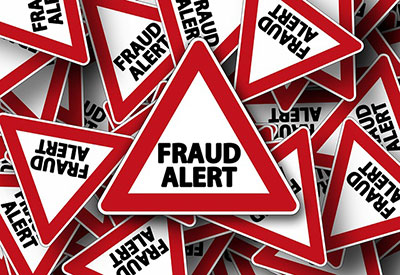Mark Acceptance: Understanding Certification Labels for Lighting Products

Dec 19, 2017
Owen Hurst
Any professional purchasing lighting products in Canada is aware of the obligation to ensure that what they purchase and install is accepted and safe. And how do we know this? Well, of course we look to the certification markings. There are a number of accepted domestic and international markings that are accepted in Canada that can be viewed on the Electrical Safety Authority webpage, including CSA, ETL and UL.
Certification marks are primarily intended to prove that a product has been independently tested and meets required safety and performance standards, which in turn provides peace of mind for retailers, regulators, consumers and end-users. In North America all electrical and lighting products are required to pass independent testing and carry recognized certification marks. Failure to use certified electrical products can result in steep fines of up to $1 million and jail time. Unfortunately, many non-certified products, especially LED lighting products, are being imported and sold to Canadians.
CSA Group, one of the most recognizable certification brands, offers a simple and direct means of submitting products for potential certification through their CSA Certification Project, which any company can undertake by contacting CSA Group.
CSA Group markings are accepted across North America and are recognized by the Standards Council of Canada (SCC) and the U.S. Occupational Safety and Health Administration (OSHA). Further, CSA Group works closely with the International Association of Electrical Inspectors (IAEI), Electrical Safety Foundation International (ESFI), U.S. Consumer Product Safety Commission (CPSC), Health Canada, and many other international governing bodies.
CSA lighting certifications are broken into two primary lighting groups.
- Solid state lighting:
- LED luminaires
- LED integral lamps
- LED drivers (class 2, non-class 2 and LVLE)
- LED components (modules)
- Traditional lighting:
- electric signs
- emergency lighting and exit signs
- high intensity discharge (HID) and fluorescent ballasts
- incandescent, tungsten-halogen, xenon, HID, and CFL lighting
- integral lamps (CFL and incandescent)
- luminaires
- seasonal and holiday decorative products
Intertek’s lighting certification process focuses on industry sectors:
- residential and consumer — meeting consumer demand for high-quality in-home lighting that is compliant and efficient with the widest range of services for lamps, luminaires, controls, and components
- Commercial and industrial — ensuring the compliance and performance of lamps, luminaires, controls, and components
- transportation — Intertek offers specialized lighting testing and total quality services for automotive, aircraft, aviation, airport, and other transportation lighting equipment
- infrastructure — verify your state and municipal lighting equipment, roadway luminaires, pole-mounted luminaires, and traffic control signals meet all industry, local, and proprietary standards
The Underwriters Laboratories of Canada focuses on certifying lighting through the following areas:
- connected lighting and lighting systems
- lamps
- lighting components
- lighting performance and energy efficiency testing
- lighting test equipment
- luminaires and signs
- retrofit kits
However, once you see a certification mark do you really know what it means? There are many accepted markings. Further, accepted certification companies use various versions of their markings to provide information on the products and the area of certification they have been approved for. Lighting products are also constantly changing in both function and materials used, which has led to further testing to meet requirements. As well as safety certification, there are also energy efficiency standards (e.g., Energy Star, DesignLights Consortium). Energy efficiency markings are voluntary, but are often a requirement demanded by customers.
And now to the question that continues to be discussed among industry professionals: when you pick up a product and look at the label, how can you be sure it truly is certified and isn’t carrying a falsified label?
In Canada there is a concentrated effort to eliminate the sale of uncertified or illegally marked lighting products. CSA Group has addressed this issue with several anti-counterfeiting measures, including a Global Brand Protection team dedicated to protecting the integrity of CSA Group’s trademarks and intellectual property from misrepresentation or fraudulent use.
Unfortunately, new directions such as online sales have provided increasing avenues for counterfeiters. CSA Group operates under a zero-tolerance policy regarding counterfeits, and the Global Brand Protection team works hard to stop the distribution of products before they reach end-users by monitoring CSA marks in ports, factories, retailers, and online. CSA Group is also a founding member of the Canadian Anti-Counterfeiting Network (CACN) as well as a member of the International Anti-Counterfeiting Coalition, an association of certification organizations that is partnered with Interpol called CIAC, the Certification Industry Against Counterfeiting.
Further, CSA Group encourages anyone to report suspected counterfeit marks. The Global Brand Protection team investigates and reports on all products that may be unauthorized.
It is also possible to access online certification databases to cross reference certification labels on your product. However a skilled counterfeiter will have already anticipated this. The best option is to contact the certifying company for verification, which may take time, but it is better to be sure the products you are installing have been fully tested and are safe:
- http://www.csagroup.org/services-industries/marks-labels/
- http://www.csagroup.org/industry/construction-building-products/lighting/
- https://www.esasafe.com/electricalproducts/marks

















